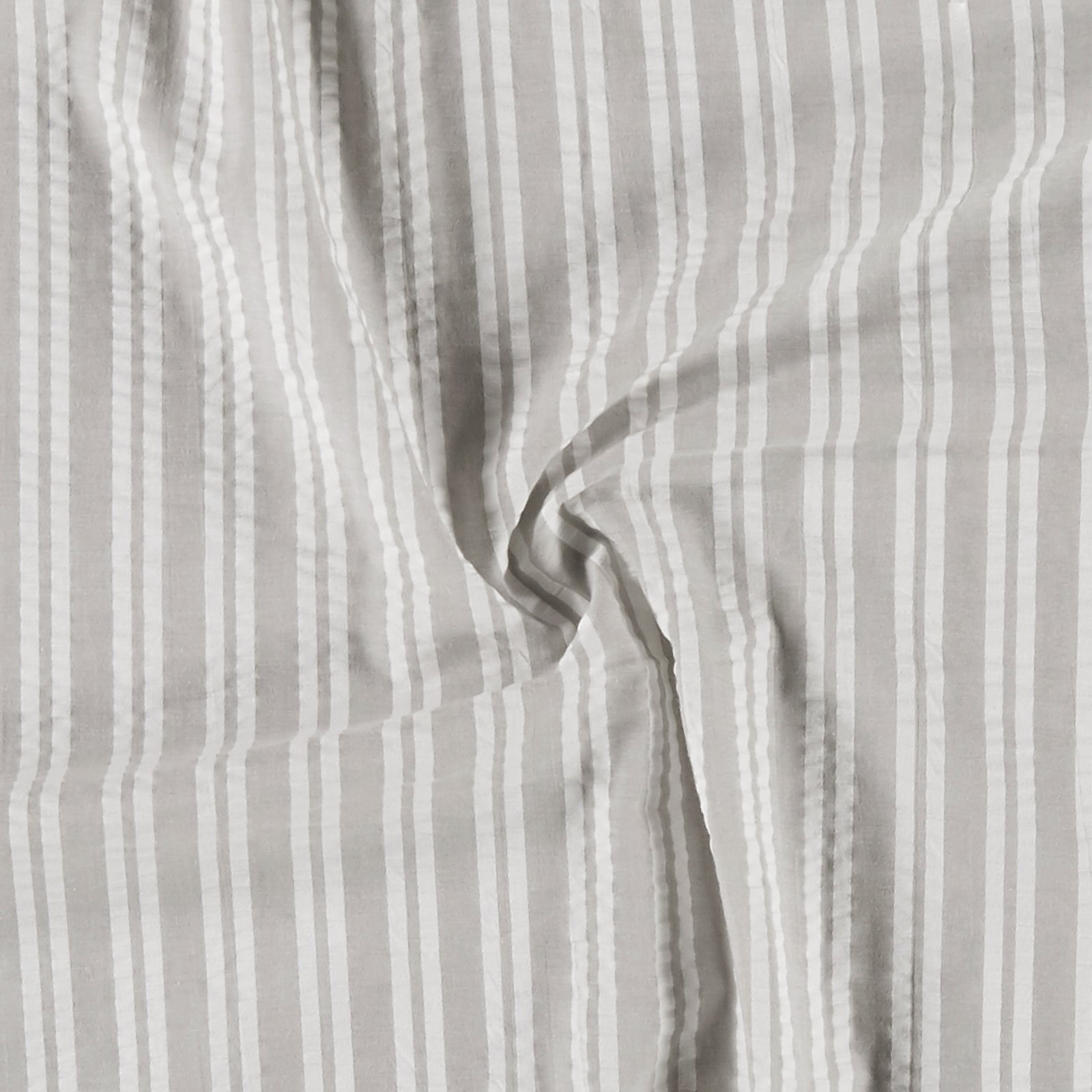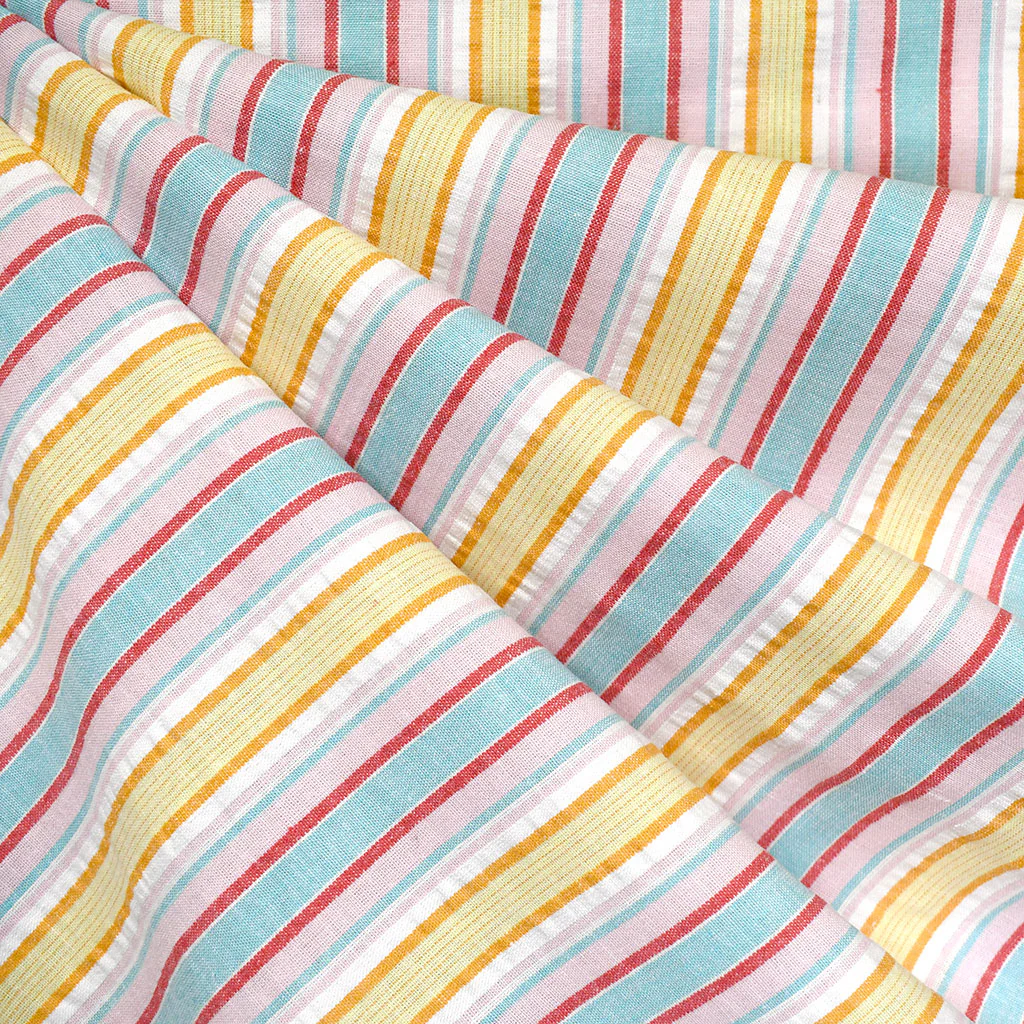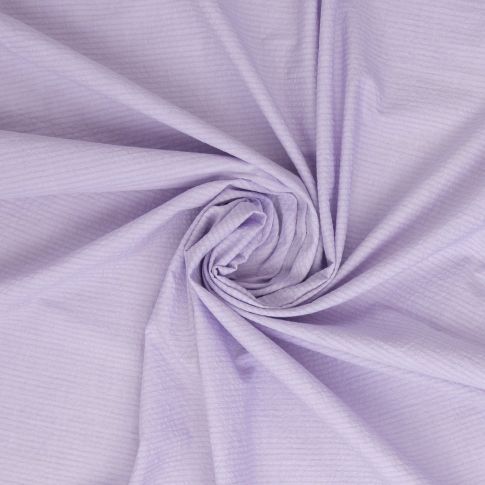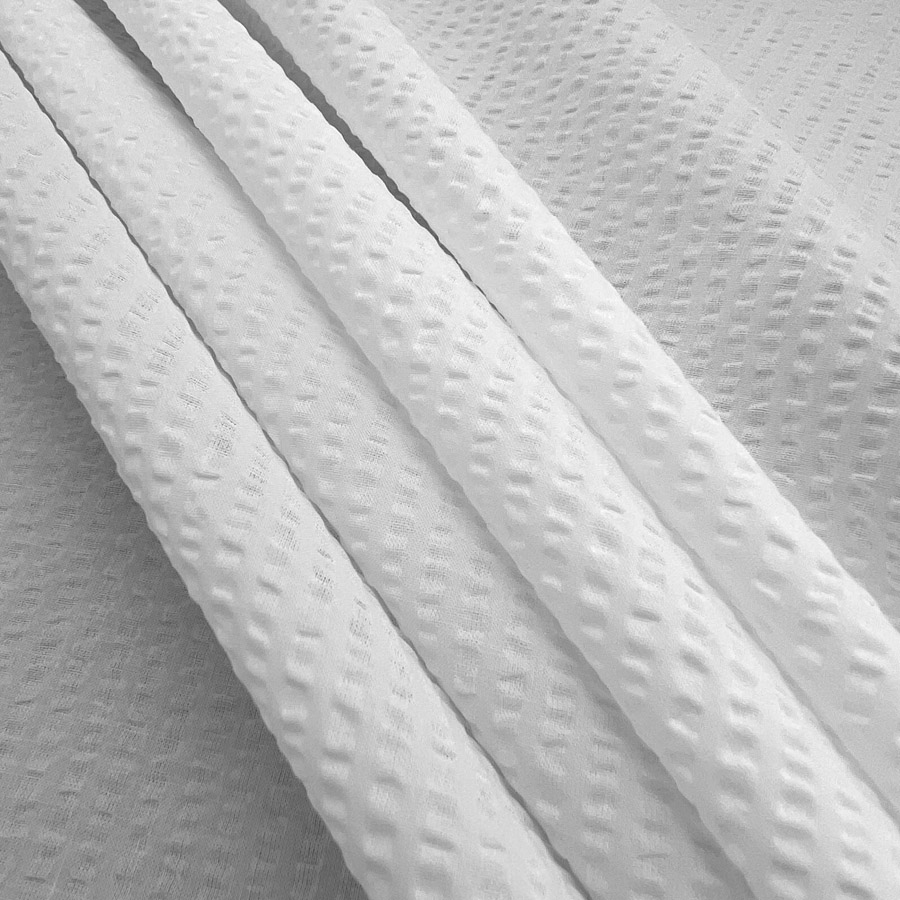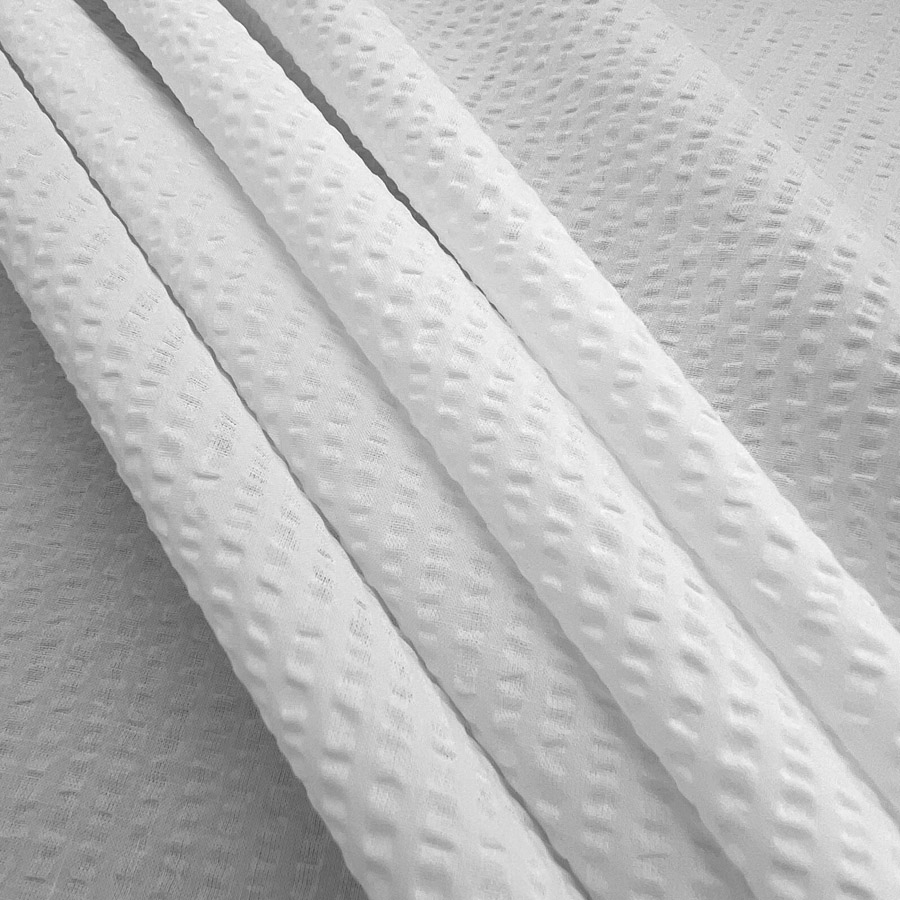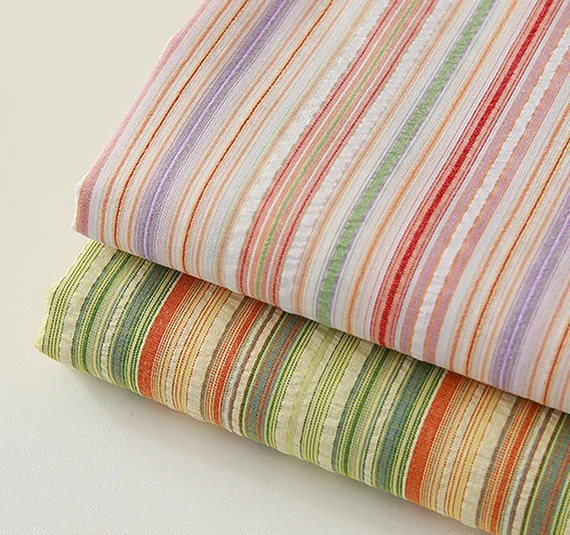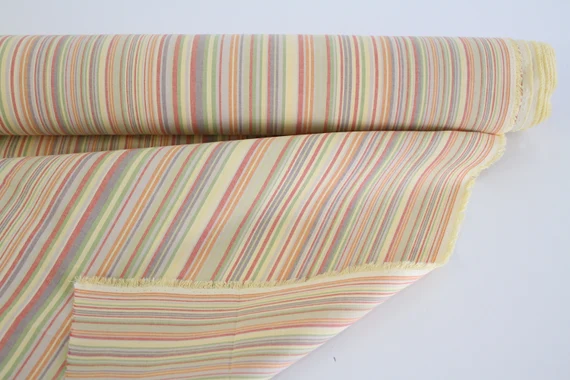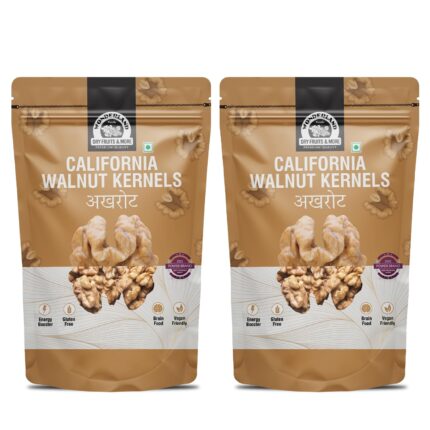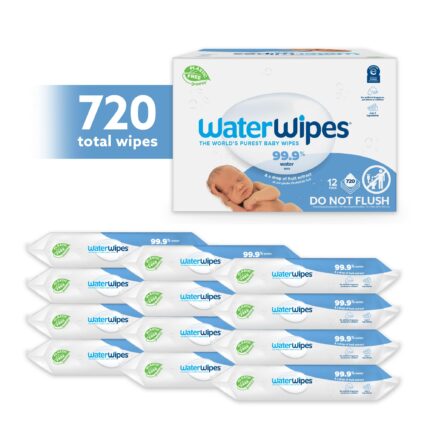Description
Seersucker is a lightweight, breathable fabric that is often associated with warm-weather attire, making it a popular choice for both casual and formal garments. Characterized by its unique crinkled texture and alternating stripes of smooth and puckered fabric, seersucker is typically made from cotton or a cotton-blend, enhancing its comfort against the skin. This distinctive texture not only adds visual interest but also allows for improved air circulation, ensuring that wearers stay cool even in sweltering heat. Traditionally favored in southern United States fashion, seersucker garments often include suits, dresses, and casual shirts, exuding a relaxed yet polished aesthetic.
The history of seersucker can be traced back to the Indian subcontinent, where it was originally made from silk and known for its ability to provide comfort in humid conditions. The name “seersucker” itself derives from the Persian words “shahrukh,” meaning “a striped fabric,” and “shir,” meaning “milk,” referring to its soft texture. Over the years, seersucker has evolved into a symbol of summer style, particularly in the American South, where events like weddings, brunches, and garden parties frequently feature this chic fabric. Its playful patterns and lightness make it an enduring favorite for those who appreciate a classic yet contemporary look.
In recent fashion seasons, seersucker has experienced a revival, with designers reinterpreting its traditional use in innovative ways. From tailored blazers to casual shorts, seersucker is being incorporated into a variety of modern designs, making it versatile enough to transition from day to night. The fabric’s ability to be dyed in vibrant colors and patterns adds to its appeal, allowing individuals to express their personal style while enjoying the benefits of its inherent comfort. As sustainability becomes increasingly important in fashion, organic and eco-friendly versions of seersucker are also emerging, making it a fabric that aligns well with the values of today’s conscious consumers.

